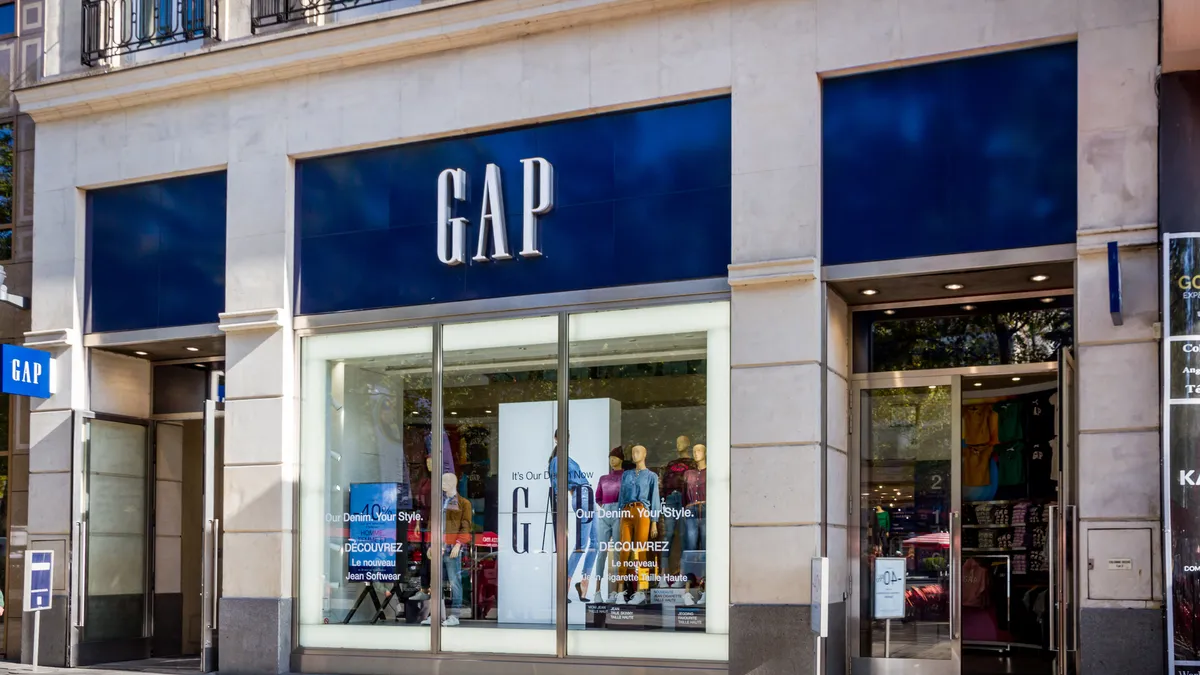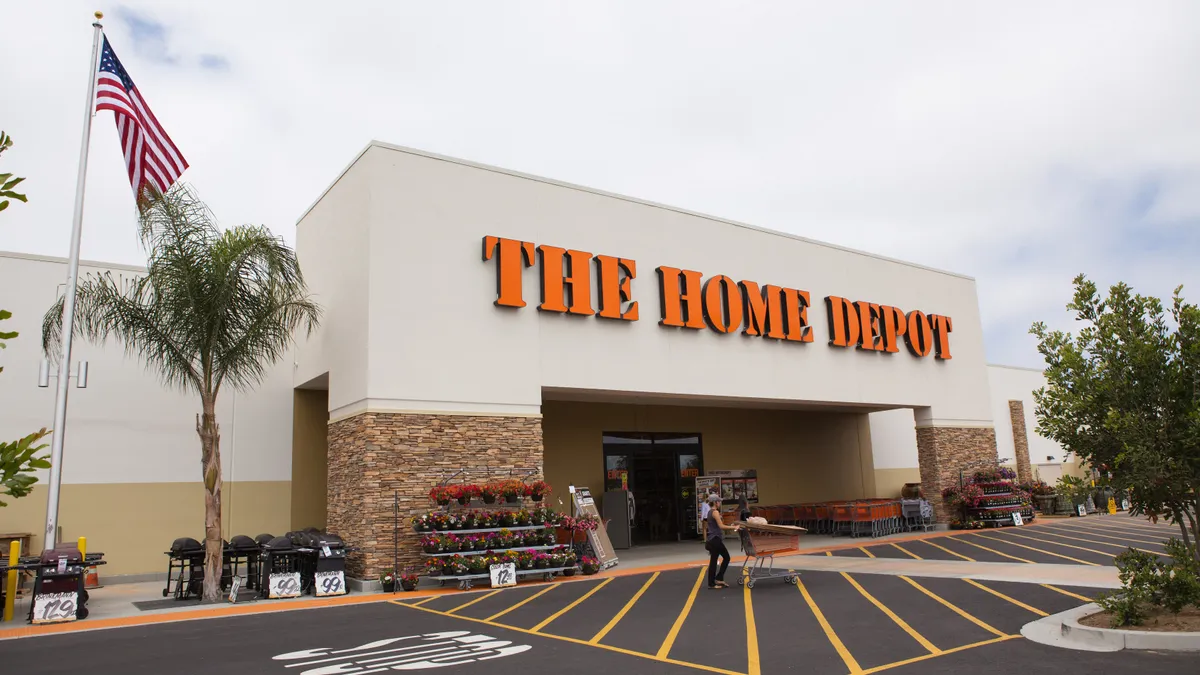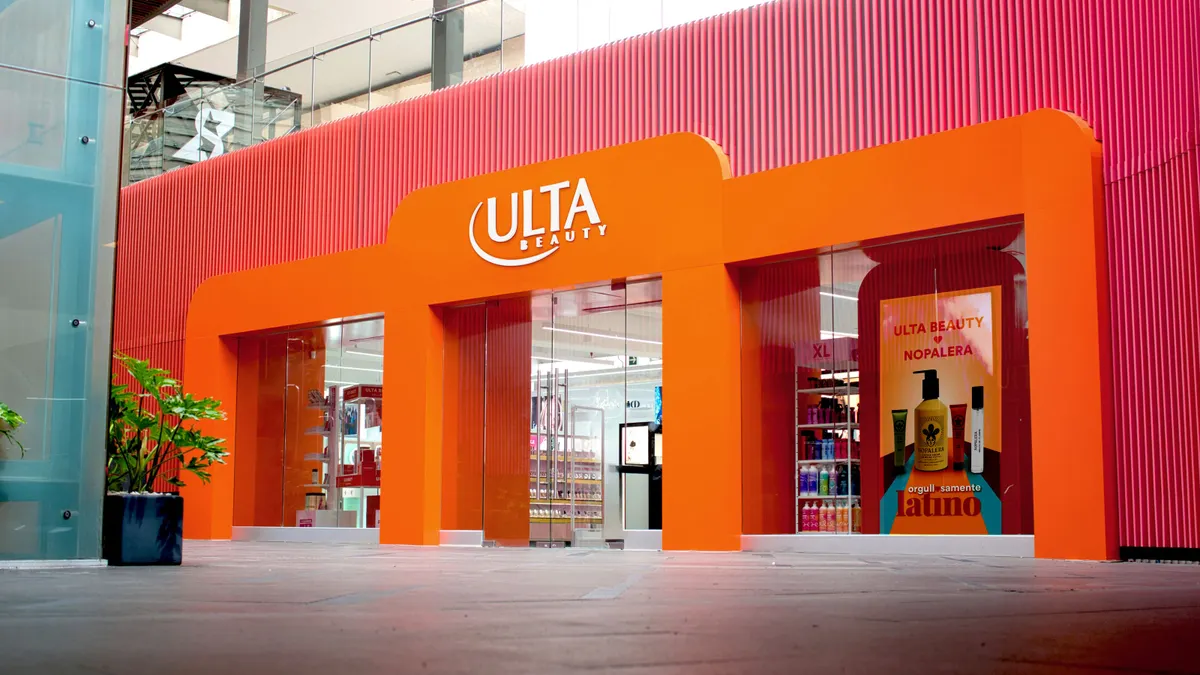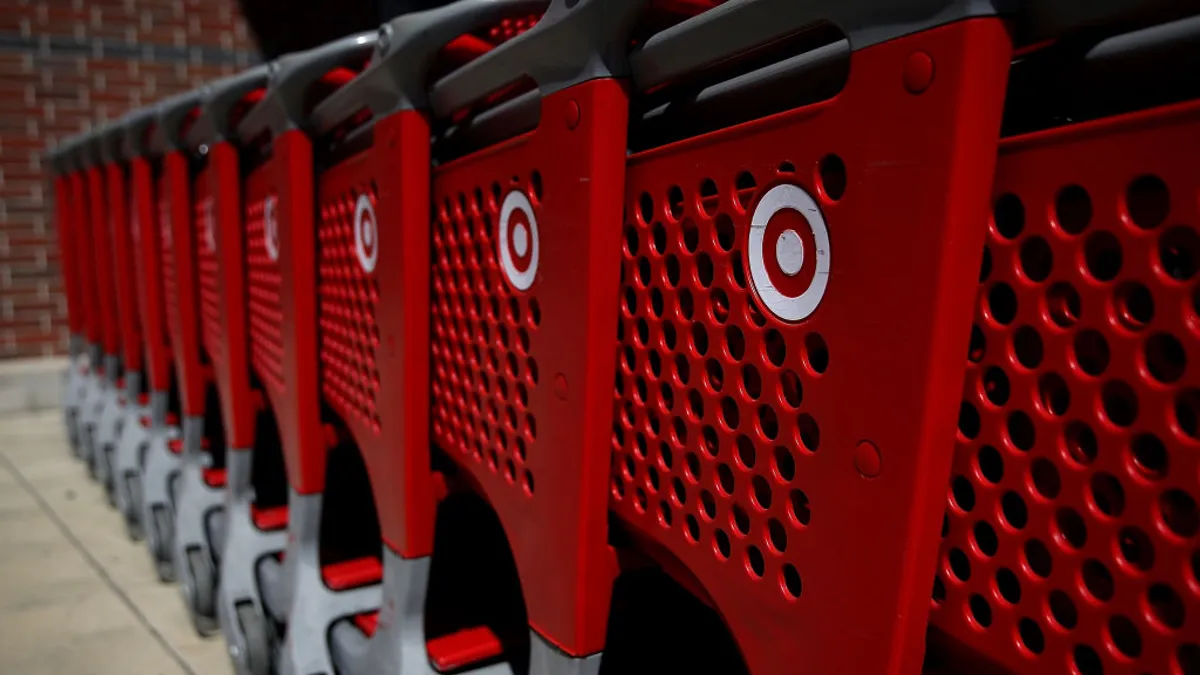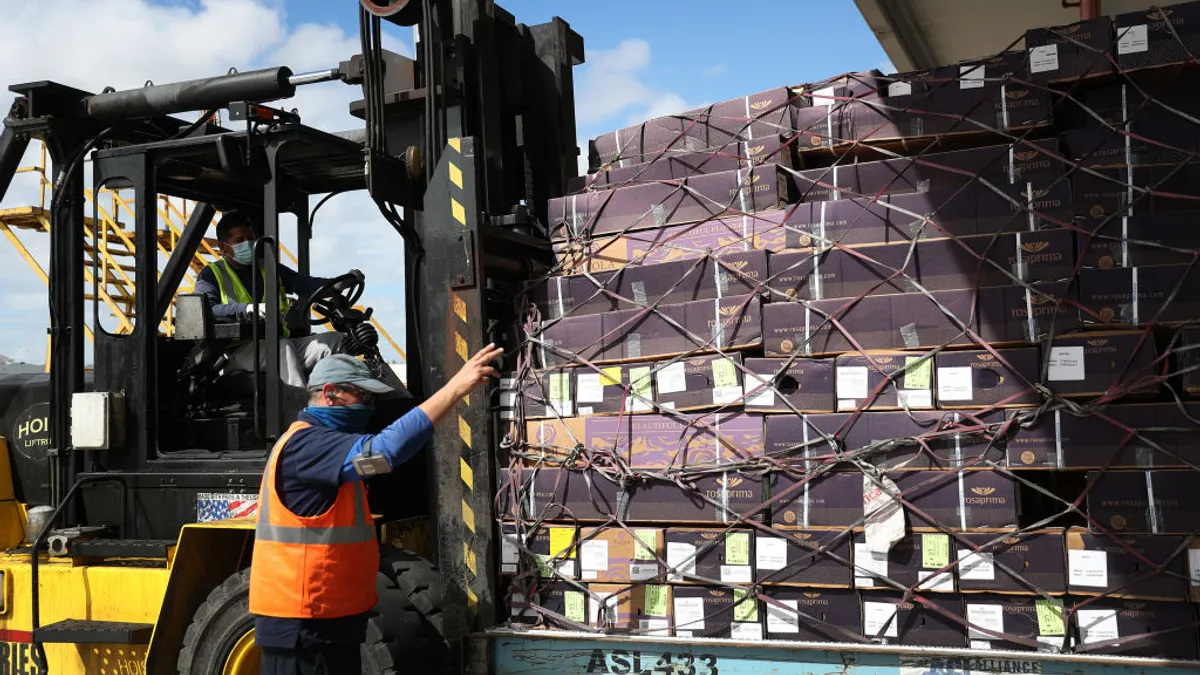The pandemic has turned millions of consumers around the country into office managers, fashioning workspaces out of portions of their homes and stocking them with all the things necessary to get their jobs done.
Under different circumstances, the work-from-home movement could have led (and might yet) to a renaissance for office supplies retailers. While large corporate buyers have long relied on commercial dealers — the largest of which also happen to be tied to the largest office supply store brands — consumers depend on retail for their home office needs.
But for years they have been buying less from the retail specialists, namely Staples and ODP Corp's Office Depot and OfficeMax banners. Store numbers and sales have steadily been shrinking, only to run into the disruptions of the pandemic.
Along with traffic decines, the COVID-19 crisis brought with it both a remote work revolution and an accelerated shift in spending with e-commerce and generalist players, both of which offer convenience and highly competitive pricing.
As the category adjusts to new trends, Staples and ODP are having an existential moment. The former, owned by private equity firm Sycamore, has been in pursuit of ODP and its retail business. A deal would leave just one major player left to dominate a shrinking, changing, uncertain retail sector.
Ever-smaller sector
Office supply stores as a sector employ some 60,000 people and bring in $10.3 billion in revenue in the U.S., which is projected to decline roughly 2% a year through 2026, according to research firm IBISWorld.
The firm noted that office supplies stores as an industry have suffered "consistent revenue declines" every year going back to 2005, due both to competition and the digitization of work itself. The industry declined by an average annual rate of 6.7% since 2016. The rate of bleeding fell to 6% in 2020 and to 0.9% in 2021, according to IBISWorld.
Data from Euromonitor also shows a steep decline at office supply and stationary stores over the past five years, with the market contracting by 38% between 2016 and 2021.
Today, Staples controls the largest chunk of the sector, with more than 47% market share, according to IBISWorld. ODP, with its banners, is No. 2 with 36% share. They are the last two specialists with any substantial share of the market. Euromonitor also places Staples and ODP at No. 1 and No. 2 in market share, respectively.
At those banners, foot traffic was falling even before the pandemic. According to Creditntell data provided to Retail Dive, total annual visits fell by the millions across the Office Depot, OfficeMax and Staples banners in 2019.
Not surprisingly, traffic fell even more steeply in 2020 as the pandemic forced store closures and kept safety-conscious customers away. But in 2021, traffic rebounded, surpassing even 2019 levels at all three major office supplies box banners.
The office supplies category more broadly has performed much better than the specialist stores. Office supplies as a category jumped 11% in 2021 to $14.5 billion, according to the NPD Group. Paper and writing products were both up by double digits, and storage products were up 22%.
E-commerce office supplies sales grew 18% year over year in 2021, and are up 77% over 2019, according to NPD. Leen Nsouli, executive director and office supplies industry analyst for NPD, said that e-commerce's share of core office supplies and stationary categories has stood around 27% to 28%, which is up about 11 points since pre-pandemic periods.
Sales for office staples such as printer ink and toner rose 129% in 2020 at mass merchants including Walmart, Sam's Club, Target and Costco, according to analytics firm 1010data. That fell somewhat (15%) in 2021 but remains up 95% over 2019 levels.
All of that is partly a testament to the endurance of work-from-home arrangements through a second year of the pandemic. The new normal is expected by many to persist, and it could do much to reshape the category.
Inna Kuznetsova, CEO of 1010data, points to growth in office electronics categories, which rose 95% in 2021 compared to 2019. "For me, that signifies the fact that a lot of people have decided to invest in better equipment … with an intent to work from home for a long time," Kuznetsova said in an interview.
Even the decline in some categories tracked by 1010data doesn't negate the persistence of home office needs. It "may be explained not by the fact that people started returning to the offices but by the fact that people have equipped themselves," Kuznetsova said. "How long does your laptop and screen and toner last? You stock up for a while."
As ODP can attest, the pandemic and the work-from-home wave it brought has taken a toll on commercial sales of office supplies, for the simple fact that empty offices have fewer supply needs.
"Even if we were able to get the majority of the workforce back [in offices], it will be difficult to see the same levels of sales that we saw in 2019 within the commercial channel," Nsouli said in an interview.
"But that leaves a very ripe opportunity for retail to meet the needs of the work-from-home and hybrid worker," Nsouli added. "It also opens the door for commercial players to better understand how they can meet the needs of the hybrid or work-from-home worker."
As other channels and retailers have experienced growth, revenue from office supplies in ODP's retail segment declined during both years of the pandemic, and for 2021 was down more than 20% from 2019. Revenue for all retail categories (which includes things like print services) fell over the same period, as did revenue at ODP's business-to-business segment.
Put simply, consumers have been spending more on office supplies during the pandemic, but not at Office Depot and OfficeMax. Even so, ODP CEO Gerry Smith in February called the performance of the retail division "simply terrific," pointing to "stable" traffic trends, and the company estimates that top-line sales increased by low single digits when excluding the impact of stores that closed, according to a Seeking Alpha transcript of its Q4 and full-year earnings call.
'A good time to rethink their business'
Store count can explain part of the sales decline in the sector, with both ODP and Staples rationalizing their footprint for a world that either wants or needs them less. According to Creditntell data, over the nearly four years between Q1 2018 and Q4 2021, Staples, Office Depot and OfficeMax each closed well over 100 stores in their respective footprints.
But the specialty retailers are closing their stores for a reason. For basic office supplies — paper products, writing utensils, printer ink, anything common and easy to ship — the specialists face a wide field of competition: Amazon, Walmart and online players. "Even supermarkets have an aisle for office supplies," IBISWorld Lead Analyst Brigette Thomas said. "But I think the biggest is definitely Amazon."
Office supply retailer footprints
Nsouli estimates that the market will settle at around a 70-30 split between brick and mortar and e-commerce in four to five years. "The industry typically adds a share point or two every year," Nsouli said of e-commerce's growing market penetration. "And it's been doing that for the past nine, 10 years."
Also in the digital mix are sellers competing in the office supplies space on online marketplaces. Based on the growth, Nsouli said that third-party sellers are likely driving some of the e-commerce expansion in the space. Third-party sellers also add to the presence of mass market giants like Amazon and Walmart in the sector, both of which operate marketplaces for sellers.
All of which is eroding the specialists' customer base, and, with it, their physical companies. "Basically what's happening is sales are slowly, slowly eroding, which they've been doing over the last couple decades," David Silverman, senior vice president with Creditntell, said. "What they're doing is, in order to remain profitable they're overcoming the loss of sales by cutting costs."
How can the specialists take on some of the country's largest retailers — and can they?
As the big-box stores shrink their presence, and more sales move online, the specialists have responded. "Within our panel of retailers that we work with, their digital enhancements over the past two years have really been ramped up," Nsouli said. "They have focused a lot more on adding things like curbside pickup, making their online platform more convenient and easier to use. We've seen retailers add certain features to their apps to drive traffic online."
There are other fundamental changes they have to make as well to compete. "I think that specialists have ample opportunity to compete, but it would require them to rethink their business models, their distribution, promotion, demand planning and deliveries," Kuznetsova said, pointing to advantages the office supplies box players have in their data on the category and its customers.
"They may rethink their segmentation and personalize deliveries and promotions in a way that is based on data," Kuznetsova said, adding, "Now is a good time to rethink their business for the next few years."
In pursuit
There is one very specific, but consequential, question hanging over the sector: What is going to happen with ODP?
Three possible known options are in the mix. ODP, as it previously announced, could split itself in two, separating its commercial and retail units into their own companies. Or it could sell itself to Staples. Or it could sell itself to another (as yet unknown) buyer.
Regarding the second option, the story of Staples and ODP's fraught courtship is years long, and carries with it a lot of baggage from the sector.
Staples began acquisition talks with Office Depot (which had previously acquired OfficeMax) in 2014. A decade of sector sales declines preceded those talks. Staples and Office Depot ultimately struck a deal to merge, but it was doomed by the Federal Trade Commission. With the deal dead, Staples was acquired by Sycamore Partners in a leveraged buyout in 2017.
Nearly five years passed, with Amazon, Walmart and other mass players getting ever more powerful across categories. The pandemic changed nearly everything except the overall trajectory of office supplies stores.
In January 2021, Staples made a bid to buy all of ODP for more than $2 billion. ODP reviewed it, and rejected the deal. The company said at the time, in a letter to Sycamore Managing Director Stefan Kaluzny, that the transaction posed regulatory risk. The company, however, left the door open for a combination of ODP and Staples' retail businesses.
In May, ODP announced it plans to divide itself into two separate, independently traded companies. When asked by an analyst if the move was related to Staples' overtures, ODP's Smith said on a conference call, according to a Seeking Alpha transcript, that the separation plans had "nothing to do with the Staples transaction at all … we think we're in a great position of strength."
Executives have trumpeted the split as a way to enhance focus and resources. Yet there's long been a reason why Staples and ODP married together retail and B2B businesses. (Under Sycamore, Staples split into two separate companies, but both remain under a common owner.) The combined businesses give the players scale in buying goods, synergies in having shared corporate and distribution infrastructure, and can offer stores as physical hubs where needed for B2B customers.
"The two working synergistically together can create a really nice package for both your corporate-level programs alongside what the consumer might need if they are working from home or a hybrid worker, and also they can work with the small businesses," Nsouli said.
A few weeks after ODP announced plans to split up, Staples and Sycamore came calling again, with a $1 billion bid for ODP's retail business. ODP continued in executing on its strategic plan despite the offer. In January, for example, it sold off its CompuCom unit for a little over $300 million. (That was just a fraction of what the company paid for the IT services company five years earlier when it was trying to beef up its offering to B2B customers beyond traditional office supplies.)
As ODP pursued a split, the Staples bid never went away. Sycamore and Staples resurfaced their desire to buy later in the fall, while ODP's executives said the company was moving forward with plans to separate itself all while remaining vaguely in talks with Sycamore on its bid and the potential regulatory risks involved.
Then, at the beginning of the year, ODP put its separation plans on ice to evaluate an offer from a different, unnamed party for its retail business, and also continue to review the Staples offer.
And that's the last the public has heard of the company's plans.
Can there be more than one?
About that regulatory risk ODP has alluded to in its Staples' offer: A combination of Staples and ODP's Office Depot and OfficeMax banners would leave just one national office supplies specialist in retail. Together, under Sycamore, they would control more than 80% of the specialty retail market in office supplies.
The first time Staples and Office Depot tried to merge, the proposition of a monopoly in big-box office supplies retail didn't appear to bother the FTC. In its challenge to the merger, the agency focused mainly on consolidation in the B2B space and potential impact on large corporate buyers.
Silverman argued that the merger would allow the rival office supply stores to rationalize their base to the benefit of the sector's long-term health. Competition could be a problem in markets where they overlap. Silverman describes a "game of chicken" wherein neither rival wants to be the first to close even an underperforming store and lose sales to the other.
"The real reason for the merger is to allow them to close their stores a little bit more efficiently and ultimately to cut costs, which in an inflationary period — and in a period where there's lower industrywide demand — is even more important now, just for their basic survival," Silverman said.
Other sectors have survived the consolidation and even the disappearance of retail specialists. Best Buy is the last national box player in electronics, while Dick's and Barnes & Noble are the last national box players in sporting goods and books, respectively. Those markets are all different from each other, and different from office supplies, but they all share one thing in common: competition from generalists and online players, especially Amazon.
But, to state the obvious, generalists aren't specialists. When Toys R Us liquidated, it took at least some smaller toy suppliers with it and weighed heavily on others, though the largest vendors and market as a whole eventually rebounded.
The things lost amid consolidation or even obsolescence of retail specialists aren't easily counted. Amazon, Walmart and Target are enormous sales channels, and can take on lost share, but there are products and brands that could benefit from the deeper shelves of a retail partner as dependent on the category as themselves. And there are customers who prefer their stores as well, with staff that are experts in the category.
Yet for office supplies, perhaps there are not enough customers to sustain a large presence, given the continual sales losses.
"The industry has been in decline for a bit, and I'd expect it's going to remain that way," IBISWorld's Thomas said.








